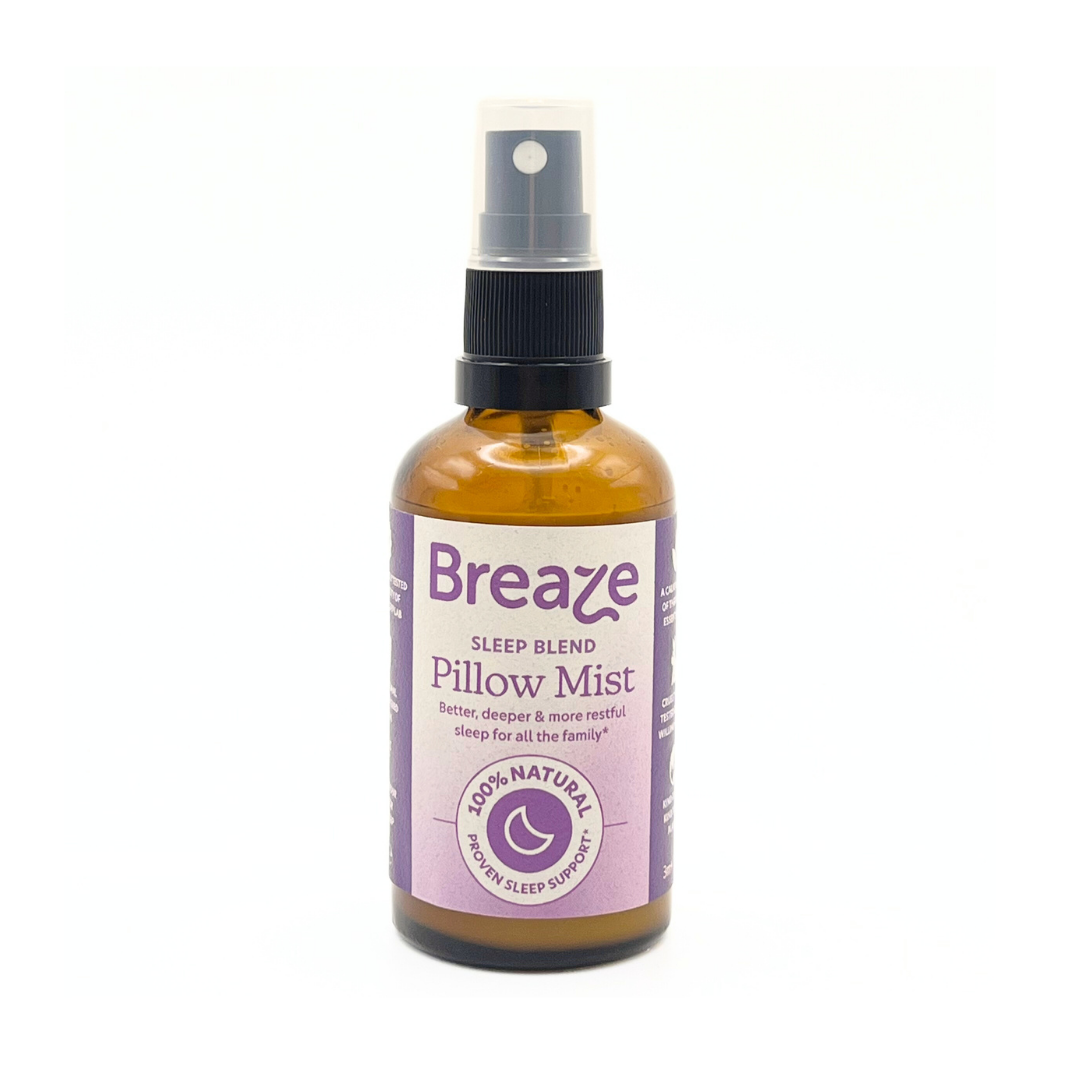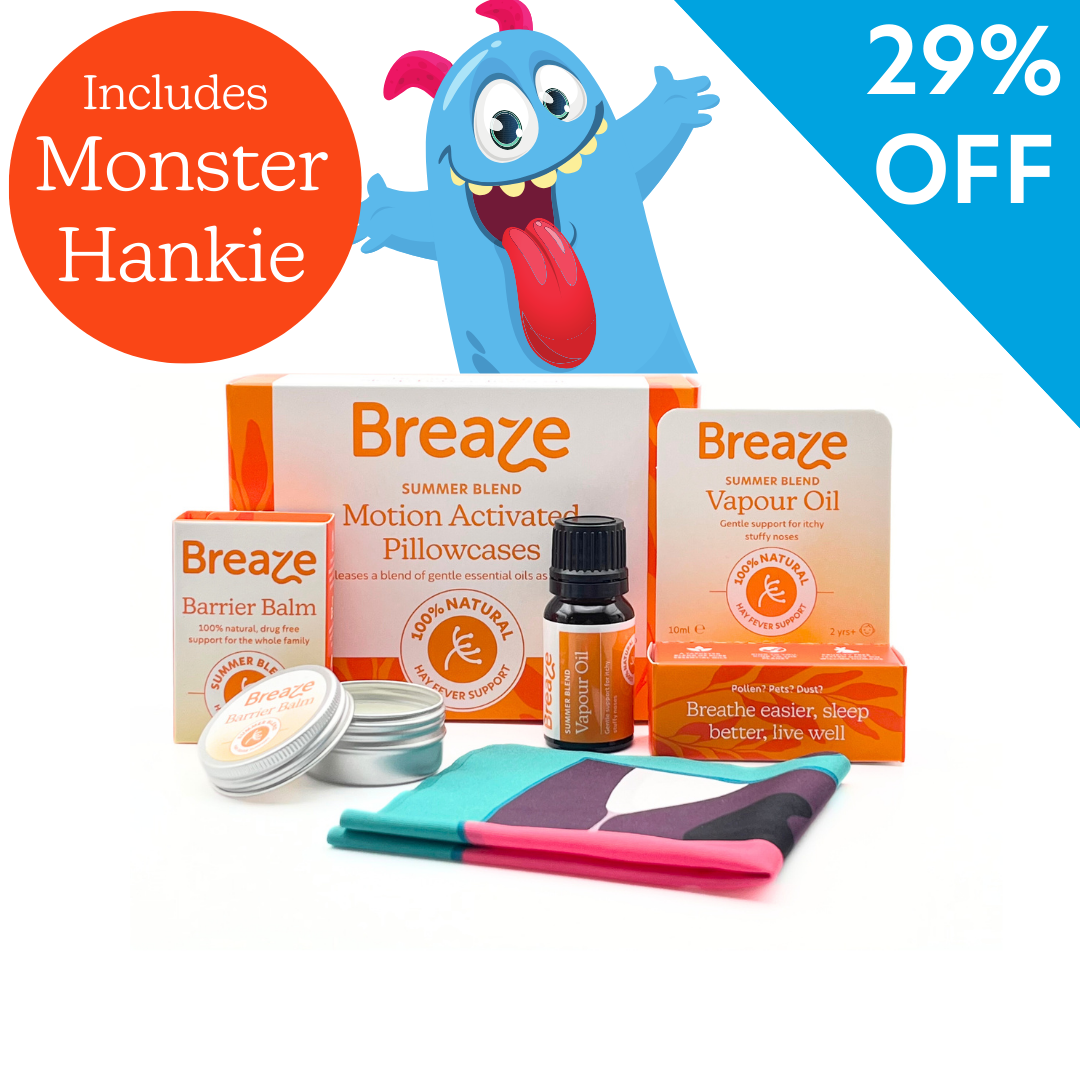Tackling the tickle – 5 natural ways to help children’s hay fever
This Allergy Awareness Week we want to shine a light on children’s hay fever. Every parent knows the struggles of keeping your child happy and active through the warmer weather, and it only gets harder when they’re suffering with the itchy, stuffy noses and streaming eyes that come with hay fever.

According to Allergy UK, 10-15% of children are affected by hay fever and symptoms can often appear from around 2-5 years, sometimes even younger. But how can you tell if it’s hay fever and not just a summer cold?
If your little ones are rubbing their eyes, sneezing and generally bunged up and snotty, it’s hard to know the difference.
It’s always best to check with your GP or pharmacist, but go armed with the right information. Do the symptoms seem to have been consistently the same over a period of a week or more (unlike a cold where the symptoms change as the days pass)? Are they more troublesome in the morning and in the early evening? If the answer to these two questions is yes, there’s a good chance that it’s hay fever rather than a cold virus.
Parents of boys may want to listen up. A recent study* has shown boys are more likely to develop hay fever than girls. It found boys (20.0%) were more likely to have a seasonal allergy than girls (17.7%).
Having hay fever is miserable; it can make it hard to play outdoors, go to school, and even sleep. And if they aren’t sleeping well, it can make hay fever symptoms even worse. They may be continuously sneezing, suffering from runny noses, or rubbing their itchy eyes.
Once you’ve got a hay fever diagnosis, your pharmacist can advise on the best treatment options. But there are lots of things you can do to help ease the sneeze with younger children.

5 Natural Ways to Help Children’s Hay Fever
- Have fun with essential oils
Some essential oils have been used for centuries to help combat hay fever and allergies. Our Summer Blend essential oil smells great and is suitable from two years. Use it like ‘perfume’ on a favourite soft toy so they can breathe the soothing aromas whilst snuggling up. Our Junior Kid’s Kit includes a fun monster hankie to use with Breaze Vapour Oil too!
- Stop it in its tracks
The key to managing hay fever is to avoid pollen as much as possible. Easier said than done in spring and summer, but using a barrier balm around little noses traps pollen before it can get up nostrils and irritate. Breaze Barrier Balm is dual action, it traps pollen and the soothing aromas of our special essential oil blend help children as young as three months to breathe easier. Wrap around sunglasses also help keep pollen away from sensitive eyes.
- Plan ahead
The Met Office tracks the pollen by day, so you can plan your park visits around the high pollen days. Check it out https://www.metoffice.gov.uk/weather/warnings-and-advice/seasonal-advice/pollen-forecast#?date=2024-04-23®ion=
- Keep it shut
Keeping car and bedroom windows shut will ensure a low pollen environment for your children.
- Keep it clean
Pollen sticks to hair, clothes and skin so it really helps to get rid of it before bedtime. Prioritise bath time in the evening, wash hair regularly and put clothes straight in the washing machine. Dry laundry on a rack indoors or tumble dry to avoid pollen collecting on line-dried clothes and bed sheets. Unless you want to bath the dog (or cat!) along with the kids, keep pets out of bedrooms during hay fever season, their coats pick up and carry pollen grains into the house.


